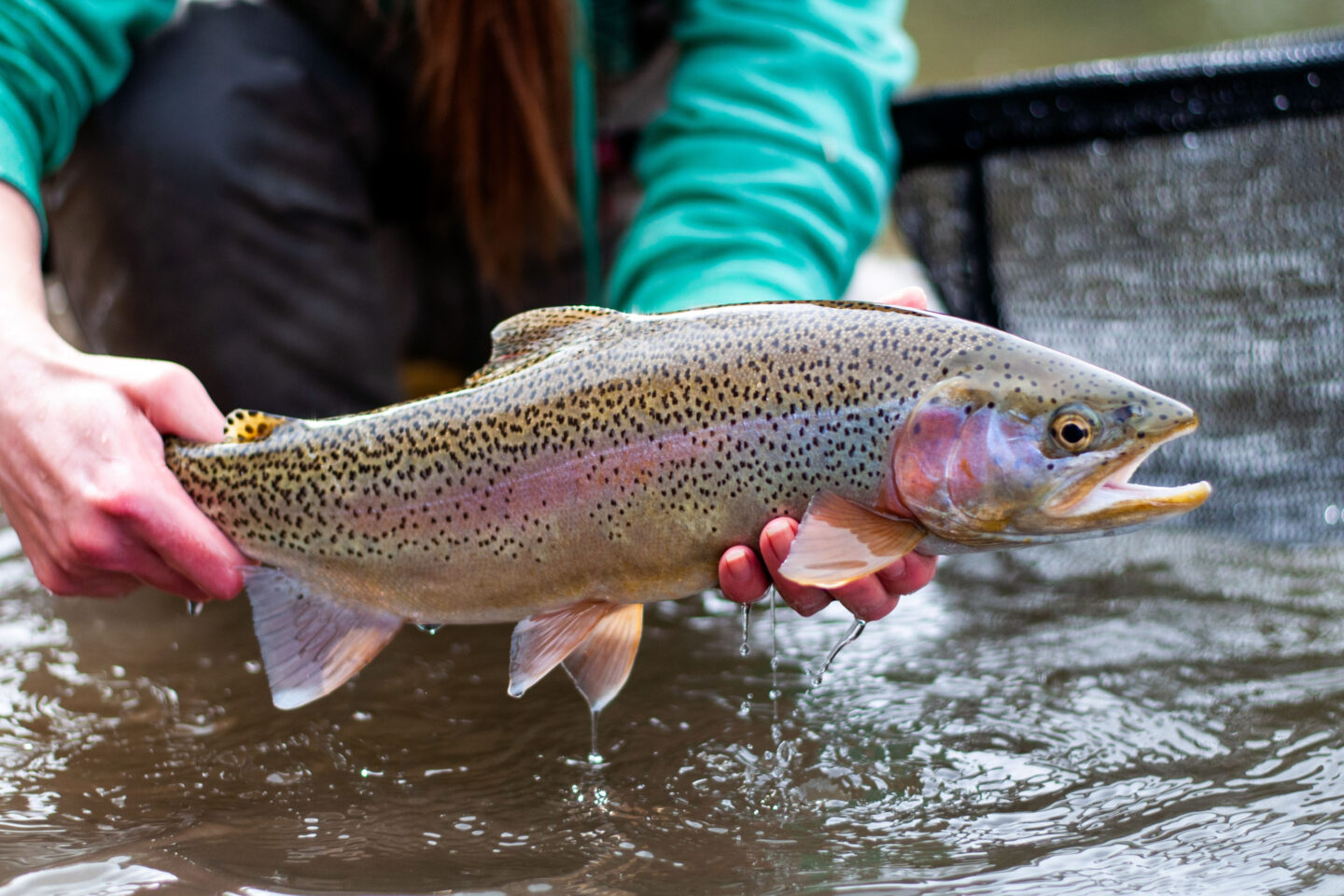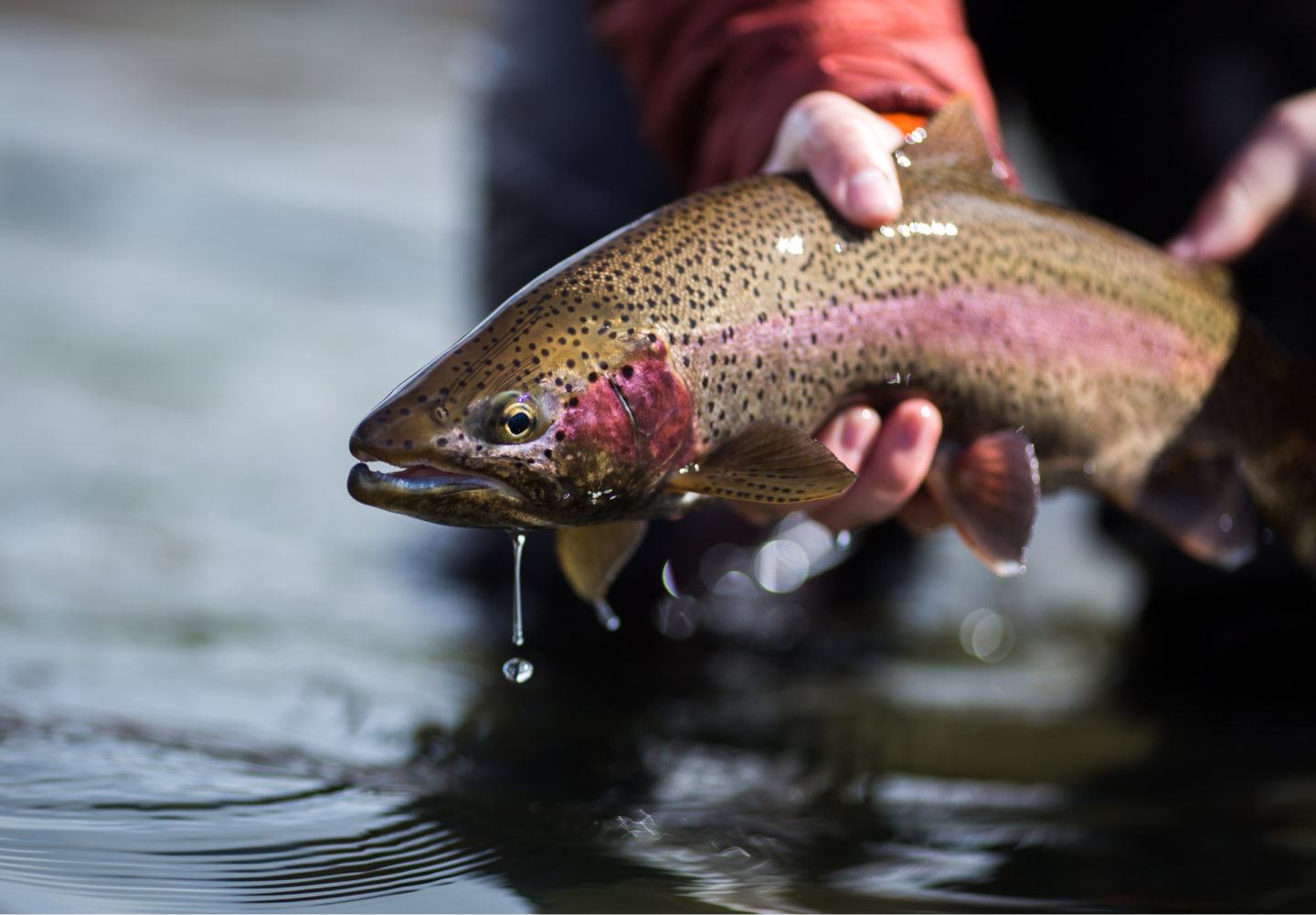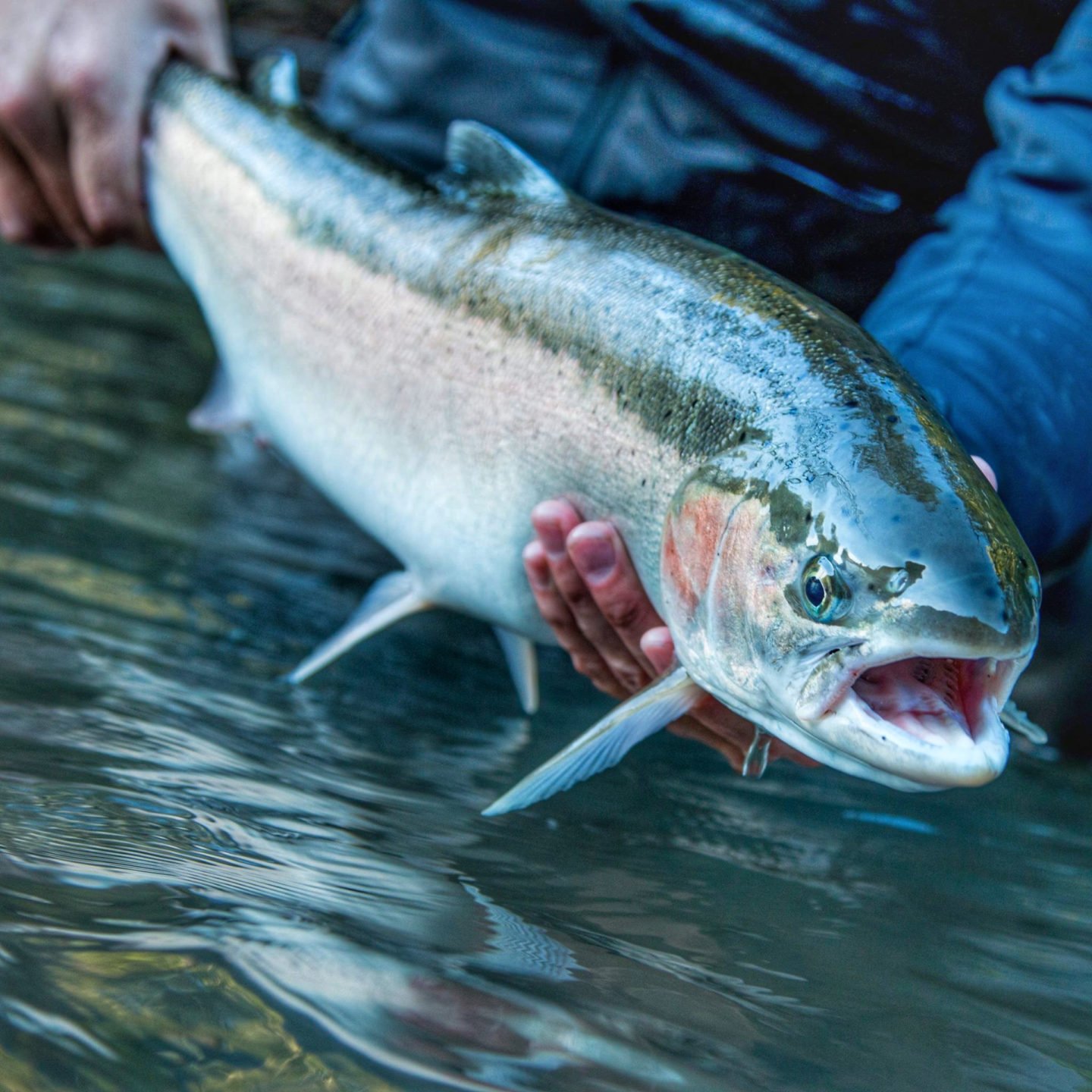If you have any experience catching, cooking, or eating fish, chances are you’ve seen these two names before. But despite their popularity, most people don’t know what makes steelhead and rainbow trout different.

The main difference between steelhead versus rainbow trout comes down to their habitat. The two are actually the same species, with steelhead trout living in saltwater and rainbow trout living in freshwater. While it might seem like a small difference, this slight change has a massive impact on the fish’s flavor, texture, color, and more.
Learn more about the differences between these two fish below.
Table of Contents
What is Rainbow Trout?

Rainbow trout is a freshwater fish common to the rivers of North America. They grow 20 to 30 inches and up to 8 lbs and can be identified by their vibrant color pattern, which includes a bright pink band that runs from their gills to their tail.
They’re a popular choice among anglers as they have a healthy population and are considered one of the most sustainable freshwater fish. However, they’re considered an invasive species in some places, and catching a few of your own is highly encouraged.
Their diet consists of insects, small fish, and crustaceans which they find in clean-running rivers and streams.
What is Steelhead Trout?

While they might not look like it at first glance, steelhead trout are actually the same species as rainbow trout. That's because trout are anadromous, which means they migrate from one body of water to another during their lives. So steelhead trout are just rainbow trout that have migrated out of their freshwater streams to the ocean.
They get their name from the more silvery appearance they have compared to their freshwater brethren. They are also much bigger, between 31 to 34 inches on average, and usually closer to 12 lbs. However, not all steelhead trout are the same, and those that have spent the longest amount of time in the ocean can grow up to 20 lbs or more!
Just like rainbow trout, steelhead trout are a popular choice among anglers as they are sustainable and delicious. Many have compared them to salmon in terms of flavor, color, and texture.
How Can You Tell the Difference?
Steelhead trout and rainbow trout have plenty of differences to tell them apart, as well as several things in common. Learn more about each fish so you can identify them for yourself.
Flavor and Texture

Like most freshwater fish, rainbow trout have more of a fishy, gamey flavor that some people consider strong. Still, they’re relatively mild compared to other freshwater fish and are a versatile ingredient in the kitchen. However, you probably don’t want to eat it raw as sushi or sashimi.
On the other hand, Steelhead trout have a cleaner flavor that is a bit like salmon. They are even more versatile than rainbow trout and are great at soaking up the flavors of other ingredients like herbs, black pepper, and lemon. It also makes a good choice for sushi and sashimi.
However, keep in mind that the difference between these two varieties may not be as important to flavor as their habitat. Most trout eaten today are farmed, which will give the fish its own flavor that is unlike wild-caught rainbow or steelhead trout. Depending on the conditions of the farm, the fish can taste like salmon or take on an undesirable muddy flavor.
Both fish have a light and flakey texture, though rainbow trout have smaller flakes. They each also have small bones that need to be removed before eating.
Color
If you see these two fish at your local fishmonger, you’d never guess they’re the same species. Rainbow trout have pale tan flesh that’s white around the edges. Steelhead trout looks much like salmon, with bright red flesh with streaks of white running throughout.
On the outside, steelhead trout have dark spots from head to tail and a characteristic silvery sheen. Rainbow trout are more colorful, with pink, green, and white scales across their body.
Size
As mentioned above, steelhead trout are significantly larger than rainbow trout. They average an extra four pounds of meat per fish but can grow much larger, up to 20 or 30 pounds. These are the steelhead trout that have spent the longest amount of time in the ocean and can even take on a slightly different flavor and texture.
Nutrition

Overall, these two types of trout have similar nutritional values, so you shouldn’t worry too much about the difference. They are both very lean sources of protein, Vitamin D, Vitamin B6, and potassium, and they are both full of Omega-3 fatty acids. Omega 3s are a great way to promote heart health and reduce inflammation.
On the whole, steelhead trout is a bit richer in all of these nutrients, so if you’re looking to fuel your body efficiently, it may be the better choice.
Price
Since trout are so plentiful, they are one of the most sustainable and affordable fish around. Both steelhead and rainbow trout are around $10 per pound at your local fishmonger. However, this price is for farm-raised fish, whereas wild-caught ones will tend to be more expensive.
Best Steelhead Trout Substitutes
Steelhead salmon has its own unique flavor and texture, but if you’re looking for a close alternative, consider a few options.
Salmon

Salmon is probably the most similar to steelhead trout in all ways. It has a deep, red color with a clean, slightly fishy taste. For fillets of similar size, you can prepare them in just the same way.
The key difference between the two is that steelhead trout is a bit leaner than salmon and also milder. So if you’re swapping salmon into a recipe, you might want to consider balancing its flavor with extra lemon or herbs.
Tilefish
Whitefish like tilefish or grouper are other suitable substitutes for steelhead trout. Even though they don’t look similar, they offer a flavor and texture that will work well in a variety of recipes. However, remember that they are even leaner and milder than steelhead trout. And so, they might get overpowered by stronger-tasting ingredients.
Best Rainbow Trout Substitutes
Rainbow trout have a stronger, more distinct flavor characteristic of freshwater fish, so it might be a bit more difficult to substitute for. Though if you look carefully, there are a few worthwhile options.
Tilapia

One of the reasons tilapia is so widely farmed is because it is mild in flavor and highly versatile. It has a slight sweetness and a pale white color once cooked.
While it isn’t exactly like rainbow trout in terms of flavor, it can be used in many of the same ways. It’s great fried, baked, or grilled. It also pairs with virtually any common fish accouterment, including lemon, butter, capers, and more.
Catfish
Catfish has a reputation for being a strong-flavored fishy fish, though when prepared right, it makes a delicious meal. Like tilapia and rainbow trout, it has a relatively mild and slightly sweet taste, like tilapia and rainbow trout. That makes catfish an excellent choice for batter frying.
One key difference between rainbow trout and catfish is texture. Catfish is denser and firmer, unlike the light and flakey rainbow trout. While it might not be as delicate, its firm texture helps it stay together for soups.
Frequently Asked Questions
Since they live in the ocean, farming true steelhead trout requires saltwater fisheries to get the natural flavor and texture of the fish. However, no regulations control selling steelhead trout as rainbow trout or vice-versa. That means it’s not always easy to know what you’re getting when you buy farm-raised fish.
Steelhead trout are safe to eat, even when caught in the wild. They contain low levels of contaminants like pesticides, mercury, and PCBs.
The skin of both rainbow trout and steelhead trout is edible and can be quite delicious. However, before eating their skin, it’s crucial to thoroughly descale it by running a sharp knife along its surface. Then bake or panfry the fish and serve immediately to enjoy crisp, crackling trout skin.

Leave a Reply